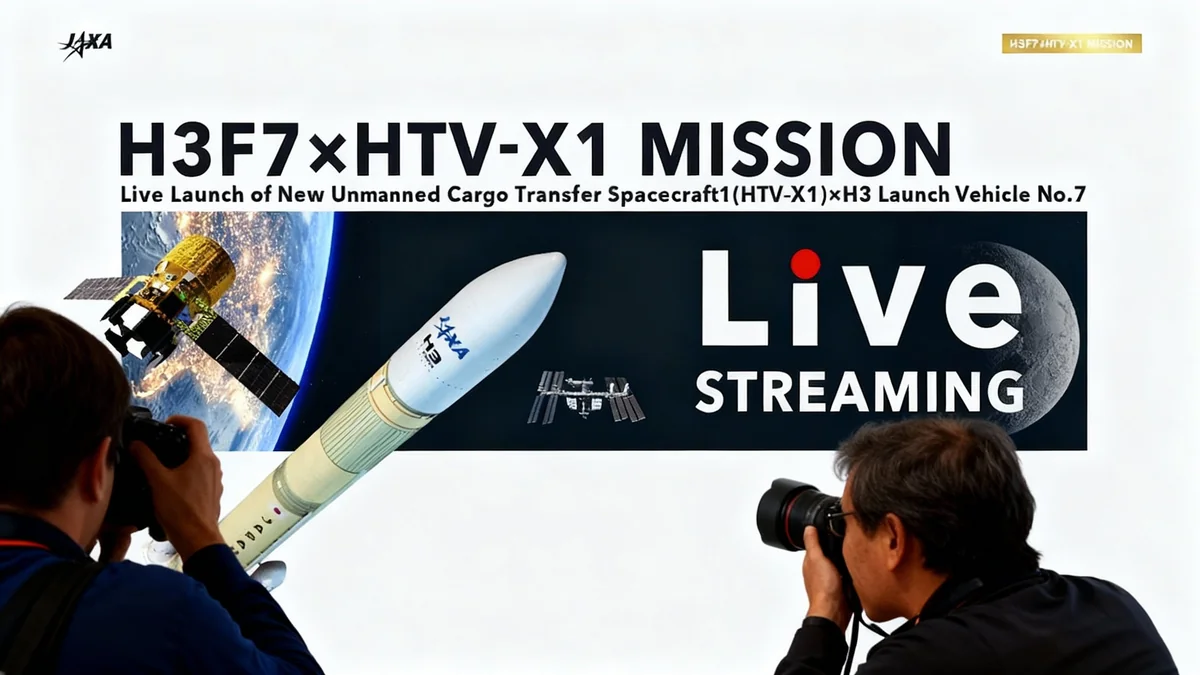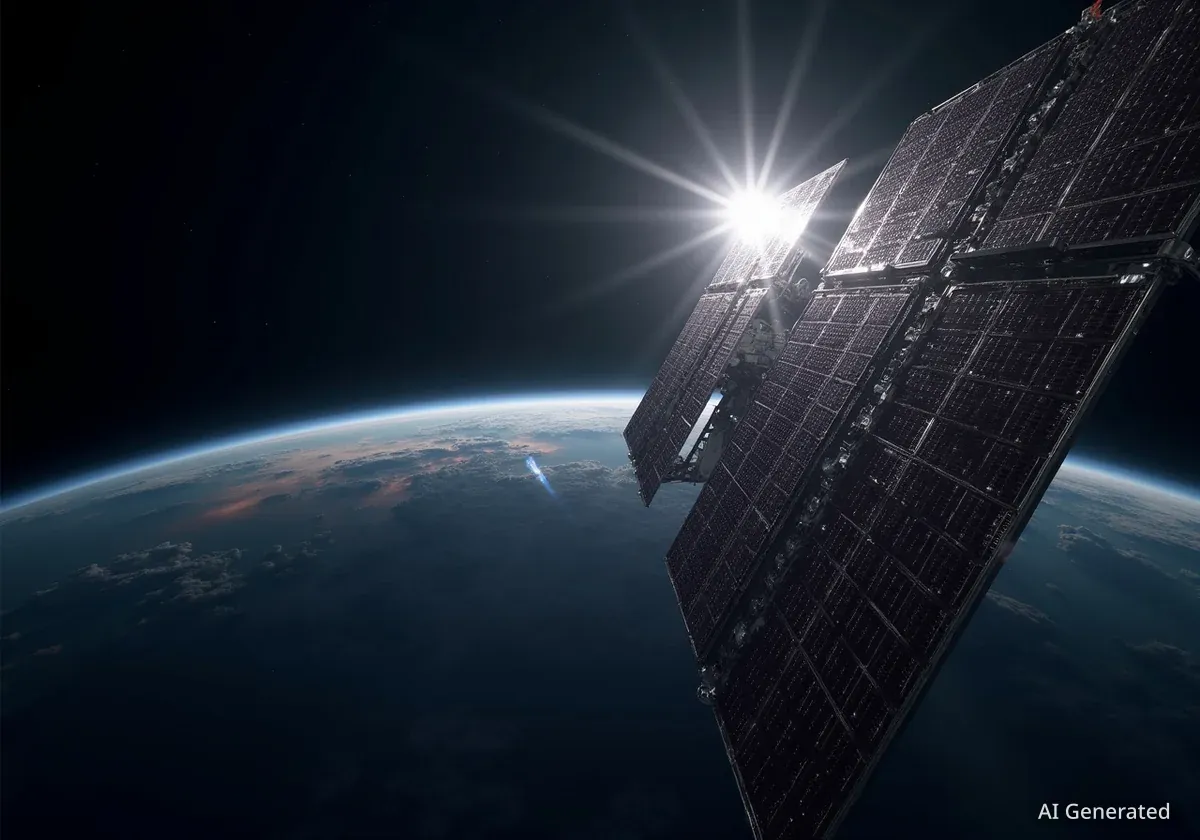The Japan Aerospace Exploration Agency (JAXA) successfully launched its new HTV-X cargo spacecraft on its inaugural mission to the International Space Station (ISS). The robotic freighter lifted off from the Tanegashima Space Center aboard an H3 rocket, marking a significant step forward in Japan's space logistics capabilities.
This launch introduces a more advanced and versatile vehicle to the international fleet that resupplies the orbiting laboratory. The HTV-X is designed not only to deliver critical supplies but also to support future deep-space exploration efforts, including missions to the lunar Gateway.
Key Takeaways
- Japan's new HTV-X cargo spacecraft is on its way to the International Space Station after a successful launch.
- The vehicle, launched on an H3 rocket, is the successor to the reliable HTV Kounotori freighter.
- HTV-X offers enhanced capabilities, including the ability to conduct on-orbit experiments for extended periods after undocking from the ISS.
- The spacecraft is part of a growing international fleet of cargo vehicles and may support future lunar missions.
A New Era in Space Logistics
Japan's space program has entered a new phase with the debut of the HTV-X. This mission, officially designated HTV-X1, is the first flight for the spacecraft designed to replace the H-II Transfer Vehicle (HTV), known as Kounotori or "White Stork." The Kounotori vehicle completed nine successful missions between 2009 and 2020, becoming a dependable workhorse for ISS resupply.
The launch occurred on October 25 at approximately 8 p.m. EDT, which corresponded to 9 a.m. on October 26 local time in Japan. The powerful H3 rocket carried the uncrewed freighter into orbit, beginning a multi-day journey to rendezvous with the space station.
Built by Mitsubishi Heavy Industries for JAXA, the HTV-X represents a significant evolution from its predecessor. While it is slightly more compact, it maintains a comparable cargo capacity, capable of transporting around 6,000 kilograms (13,200 pounds) of supplies, experiments, and hardware to the astronauts living and working in low Earth orbit.
The Legacy of Kounotori
The original HTV, Kounotori, was instrumental in supporting the ISS for over a decade. It was known for its ability to carry large, unpressurized cargo in an external bay, a feature crucial for delivering items like battery replacements for the station's power system. The HTV-X is expected to continue and expand upon this legacy of reliable logistics support.
Advanced Capabilities and Future Ambitions
The HTV-X is more than just a delivery truck. One of its key enhancements is the ability to operate independently in orbit for an extended period after its primary mission at the ISS is complete. According to Mitsubishi Heavy Industries, the spacecraft can serve as a platform for on-orbit technology demonstrations for up to 1.5 years before its controlled reentry into Earth's atmosphere.
This feature opens up new opportunities for research and development in space, allowing companies and research institutions to test new technologies in a real microgravity environment without taking up valuable time or space on the ISS itself.
Beyond Low Earth Orbit
JAXA has designed the HTV-X with an eye toward the future of human spaceflight. The agency envisions the spacecraft playing a role in supporting activities beyond the ISS, particularly as humanity pushes farther into the solar system. Its capabilities are being considered for missions to the Gateway, the small space station that NASA and its international partners plan to build in lunar orbit as part of the Artemis program.
"HTV-X enhances transportation capabilities and adds the capability to provide various users with on-orbit demonstration opportunities," stated Mitsubishi Heavy Industries in a description of the vehicle's potential.
This forward-looking design ensures that Japan's investment in space logistics will remain relevant for decades to come, adapting from ISS support to enabling exploration of the Moon and beyond.
HTV-X at a Glance
- Length: 8 meters (26.2 feet)
- Payload Mass: Approximately 6,000 kg (13,200 lbs)
- Launch Vehicle: H3 Rocket
- Builder: Mitsubishi Heavy Industries
- Primary Mission: ISS Cargo Resupply
- Secondary Mission: On-orbit technology demonstration platform
Strengthening the International Supply Chain
The successful launch of HTV-X adds a fourth active vehicle to the international fleet of cargo spacecraft servicing the ISS. This diversification is crucial for the long-term health and operational stability of the station, ensuring that there are multiple, redundant systems for delivering essential supplies.
The current operational freighters include:
- SpaceX Dragon: The only reusable cargo craft currently in service, capable of returning experiments and hardware to Earth.
- Northrop Grumman Cygnus: An expendable vehicle that, like HTV-X, is designed to burn up upon reentry.
- Russian Progress: A long-serving expendable cargo ship that has been resupplying space stations for decades.
The introduction of HTV-X provides another robust option for NASA and its partners. Each vehicle has unique capabilities, and a diverse fleet ensures that the ISS remains well-stocked and scientifically productive, even if one provider experiences delays or issues.
Like its predecessor, the HTV-X is a disposable vehicle. After astronauts on the ISS unload its cargo and fill it with trash and unneeded equipment, it will detach from the station and perform a deorbit burn. This maneuver will send it on a trajectory to safely disintegrate over a remote part of the Pacific Ocean, concluding its mission.





